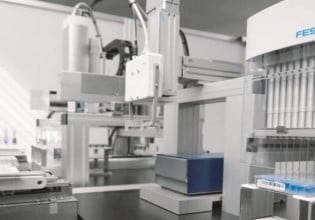Contactors versus Relays - Differences and Applications
Although the are similarities in operating theory, relays and contactors are used in industrial circuits for different specific applications, and should not be used interchangeably.
Relays and contactors are widely used in industrial automation applications. Both these terms for components are used interchangeably by many engineers. Both the devices act like switches and both of them use the principles of electromagnetic induction to function. But does this mean that relays and contactors can be used interchangeably? No, is the short answer.
In terms of operation, relays and contactors actually are the same. At the core, relays and contactors are used to separate the control circuit from the main circuit. But functionally, relays and contactors are used in industrial circuits for different specific applications. They cannot be used interchangeably. As automation engineers, we need to have a deeper understanding of relays and contactors, to use them for the right application. In this article, let us take a deep dive into these two topics:
- The working principles of relays and contactors.
- How are they different?
Though there are many different types of relays and contactors, but for this discussion we will be considering only electromechanical relays and contactors. Solid-state and safety-rated components are left for articles of a different scope.

Figure 1. Relays and contactors, although they both work on the principle of magnetic field action, are very different components.
Relays
A relay consists of two distinct circuits: the control circuit and the main circuit. The control circuit controls the flow of electricity in the main circuit. The control circuit has a solenoid coil that, when energized, produces a magnetic field. This attracts the movable contacts that in turn open or close the main circuit. The control circuit is powered by a battery or small energy source independent from the main circuit. This is the basic working principle of an electromagnetic relay. Typically, the control circuit consumes less current at a smaller voltage than the main circuit.
There are two types of relays: normally open (NO) and normally closed (NC). The NO and NC relays are different only by different mechanical designs for armature and contacts. A good many relays have a double-throw configuration, meaning each main circuit contains both an NO and NC output, supplied by a single dry contact.
Contactors
In operating theory, contactors work similarly to relays. They also separate the control circuit from all main circuits with higher power ratings. The control circuit is powered by a low power external source to close the high-powered main circuit. When the control circuit is powered, the electromagnetic coils of the contactor get energized and pull the connector. This closes the main circuit and power flows through the contactor. Contact terminals of contactors are always normally open and contact terminals close when the control circuit is energized.

Figure 2. Contactors are usually larger than their relay counterparts. Image used courtesy of Iskara
Differences
Let us go through some of the major differences between relays and contactors.
Load Capacity
The load-carrying capacity of contactors and relays vary significantly. Contactors have a much larger load-carrying capacity than relays, at least for typical situations (there are relays with higher tolerances). Both contactors and relays have the following ratings:
- Voltage rating
- Ampere rating
- Horsepower rating
The ampere rating and horsepower rating for the contactors will be significantly more than that of the relays. Usually, the ampere rating of the relays is less than 10 A and the horsepower rating is less than 0.5 HP. Contactors are rated for higher amperes and horsepower. Common voltage ratings for control relays are generally less than 250 V and contactors can be rated for up to 1000 V.
AC/DC Loads
Contactors are more suitable when the power in the main circuit is alternating current. Contactors do not fare well for DC-powered main circuits, since the large inductive loads on typical contactors can generate dangerous reverse ‘flyback’ arcs. Relays work well for both AC and DC power. If the main circuit is powered by direct current, it is better to use relays. This is applicable only if the horsepower rating and ampere rating suit that of relays.
Multi-Phase
Contactors can be used in three-phase circuits and single-phase circuits. They are more prevalently used in three-phase circuits. Relays only support single-phase operation. If relays have to be used in a three-phase circuit, three main relay contacts have to be used, one for each phase. This makes the circuit more complex and wiring cumbersome, and once again, maximum power ratings must be observed.
NC/NO
Control relays can be designed to be normally closed (NC) or normally open (NO). For normally open relays, the main circuit is open when the control circuit is not energized. The main circuit closes when the control circuit is powered. For normally closed relays, the main circuit is closed when the control circuit is not energized. The main circuit opens when the control circuit is powered.

Figure 3. This relay has two poles, each with a normally open and closed, making it a double-pole-double-throw (DPDT). Image used courtesy of IDEC
Contactors are usually designed to be normally open. This means the main circuit is open when the control circuit is not powered and closes when the control circuit is powered. In the case of a control power failure, the main circuits will always open and load operation will halt.
Auxiliary Contacts
Contactors have auxiliary contacts to verify operation of three-phase power input and output circuits. Some contactors have built-in aux contacts, but others must be purchased and installed separately.
Relays, being reserved usually for smaller power circuits, do not often have auxiliary contacts. They simply make use of the other remaining contacts to indicate when the main load-bearing circuits are open and closed. Some contactors, and even occasional relay designs do have separate auxiliary contacts for normally open operation and normally closed operation.
Safety Features
Contactors operate with a larger power rating. During switching, there are chances for electric arc formation. Due to this reason, contactors are generally fitted with built-in arc chutes for suppressing electric arcs. Control relays work with smaller voltages, amperes, and horsepower.
Physical size
As contactors need to accommodate multiple phases at a higher power rating, they are physically larger. Some contactors are surprisingly large. Control relays are physically much smaller than contactors. The additional safety and auxiliary features needed for contactors also increase their physical size even further.
Multiple circuits
Contactors are typically only used to control a single main 1-phase or 3-phase load circuit. Relays also generally control a single main circuit, but relays can be easily used to control multiple main circuits, or hand logic to another control circuit (they relay information, the main purpose of their name).
Symbols
The symbol for the respective devices is shown below:

Figure 4. The symbol for a relay (left) and for a contactor (right).
Applications
Relays are more commonly used in control automation and protection circuits. Contactors are used for switching high-power equipment like motors, lights, and capacitors.
Summary
Contactors and relays have the basic core functionality. They assist in closing and opening power circuits based on the inputs to a control circuit. The key difference is in the applications for which they are used and the features they possess. Relays are commonly used in control automation circuits that have small power ratings. Contactors are used in higher power applications. Due to this fundamental difference in the applications they are used for, they have various differing attributes.
Even though the core functionality of contactors and relays may be the same, they cannot be used interchangeably, and it is always important to recognize when to use the right tool for the right job.
Love relays? So do we! Check out our whole collection of relay content:
- Differences Between Electromechanical and Solid State Relays
- How to Troubleshoot Mechanical Relays
- Info Byte: What’s the Reason Behind Relay Terminal Numbering?
- Info Byte: Preventing Relay Burnout with Flyback Diodes
- Understanding the Differences Between Protection Relays vs Control Relays
- Info Byte: The Mystery of Ice Cube Relays–Coil Polarity
- I/O Module Debate: Digital Output or Relay Output?






